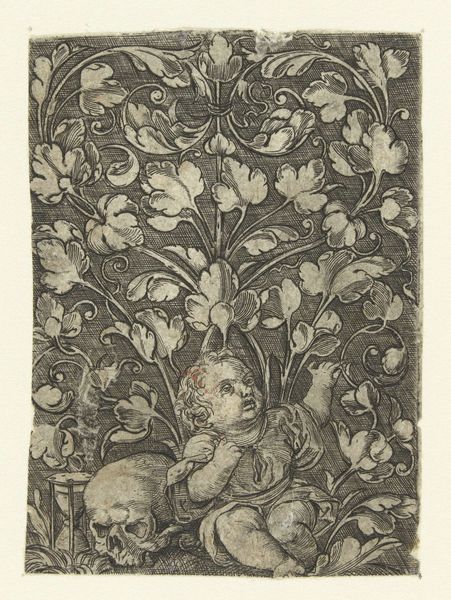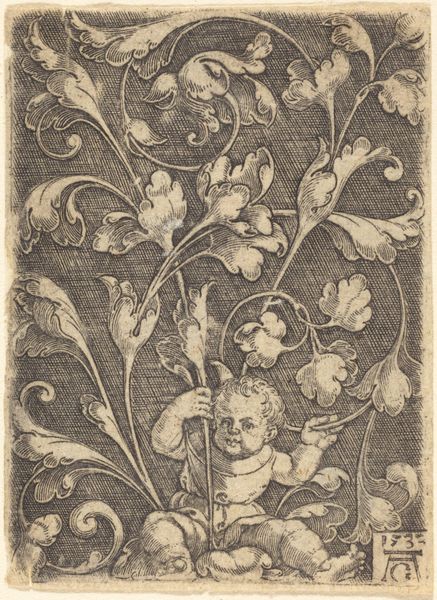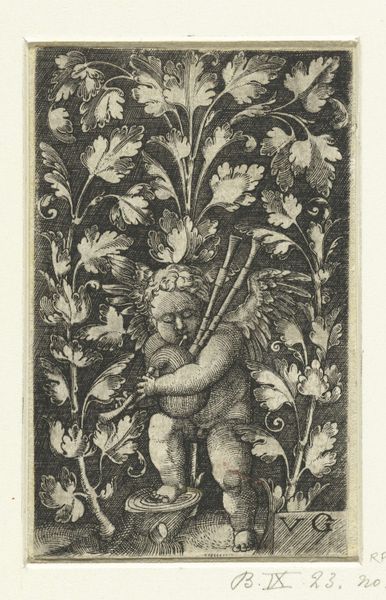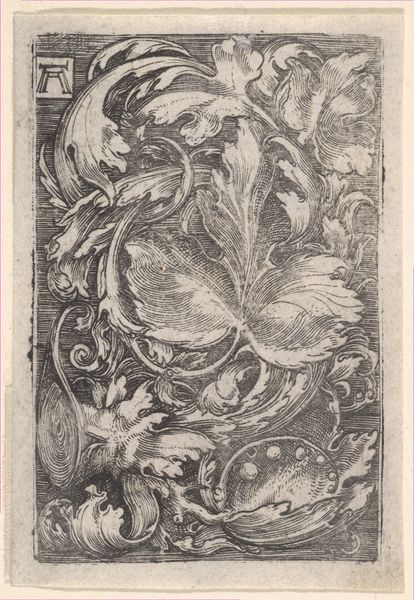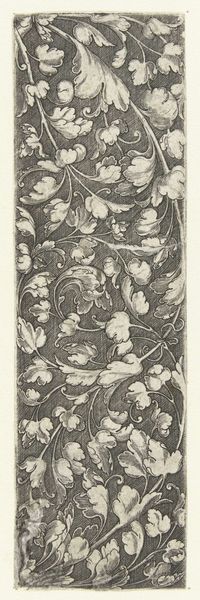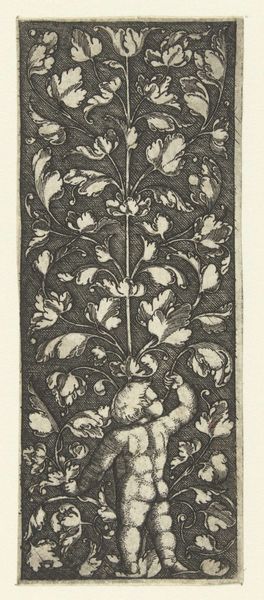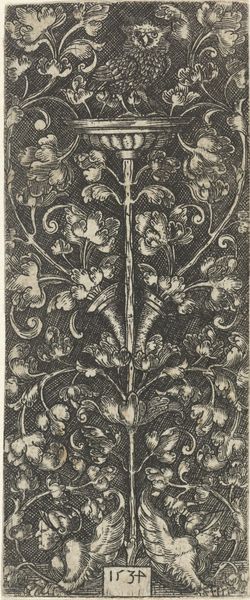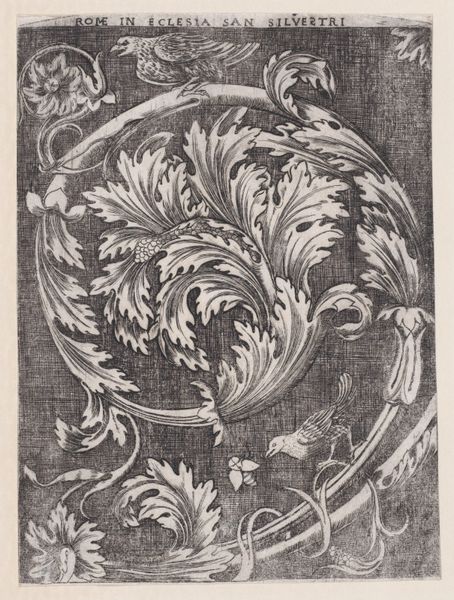
drawing, print, engraving
#
drawing
#
pen drawing
# print
#
pen illustration
#
old engraving style
#
figuration
#
form
#
ink line art
#
11_renaissance
#
child
#
pen-ink sketch
#
line
#
pen work
#
northern-renaissance
#
engraving
Dimensions: height 69 mm, width 51 mm
Copyright: Rijks Museum: Open Domain
Curator: Ah, I feel drawn to the texture. It's "Bladranken vastgehouden door een zittend kind" – executed by Heinrich Aldegrever in 1532. Quite the mouthful, but a treasure from the Rijksmuseum. Editor: Right, and the treasure’s surface swims with dense foliage that almost swallows that central figure. What initially reads as playful becomes slightly oppressive, wouldn't you say? A little… claustrophobic? Curator: Claustrophobic! I hadn't thought of that. For me, the formal composition sings! Aldegrever's masterful play with line creates a mesmerizing push and pull. Note how he uses contrasting tones to carve out the botanical forms that frame our chubby cherub. Editor: Precisely. Observe how those dark, meticulously engraved lines articulate the dense foliate arabesque – so typical of the Northern Renaissance – then trap this plump infant at the base. He appears almost pinned beneath the weight of ornamental convention, doesn’t he? The vines aren't so much held, as they are burdened. Curator: Perhaps you’re right. He is grappling with it, literally trying to get a hold of all that fecundity! It might be that Aldegrever hints at childhood innocence wrestling with the complexities and the abundance of the world. Imagine a toddler in a garden overgrown – the wonder, the challenge… Editor: A poignant visual metaphor – ingeniously conveyed by compositional architecture. Even the stark contrast emphasizes an emerging battle between nature’s exuberance and human attempts at control and containment, no? And look at the precise execution; that crosshatching gives almost a sculptural quality despite the print's relative flatness. Curator: It's astonishing work for a print, truly. I mean, you can feel Aldegrever's intense focus on detail—the weight of each stroke deliberate and communicative. And if you look carefully, that infant is actually quite muscular, a playful symbol of strength perhaps, or, dare I say, of a force of nature? Editor: Mmh, perhaps there is indeed a tension. The way forms both recede and come forward reveals complex layers and suggests multiple readings… and all delivered through deceptive visual simplicity. Curator: Ultimately, it speaks of the many ways we grasp – or fail to grasp – the world around us, a fitting notion to contemplate while touring the Rijksmuseum. Editor: A testament to how constraints—whether artistic conventions or life’s realities—shape perception and creativity, a gem unearthed.
Comments
No comments
Be the first to comment and join the conversation on the ultimate creative platform.
